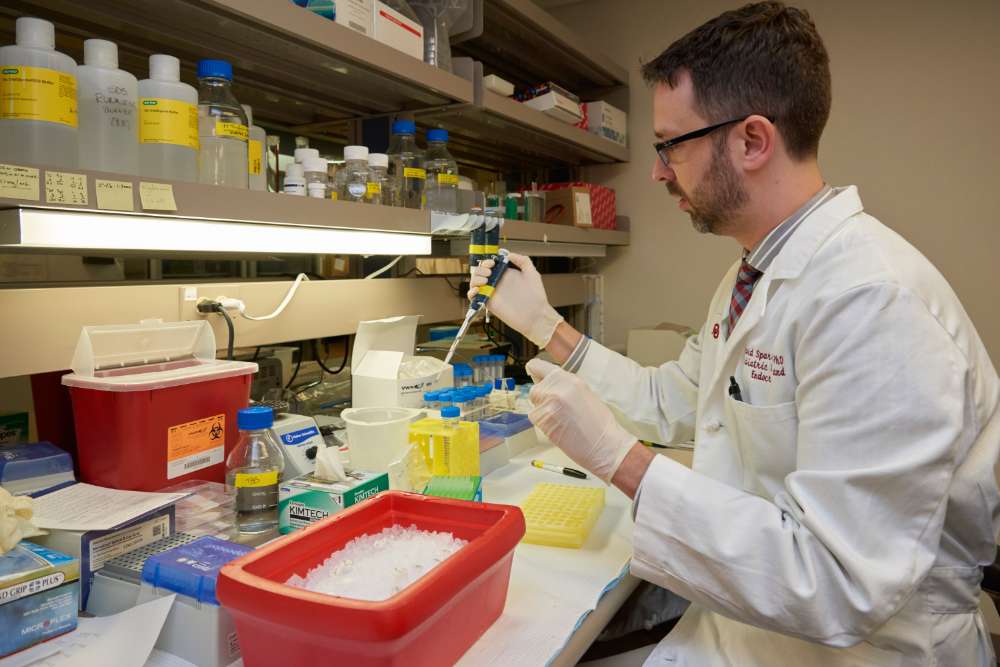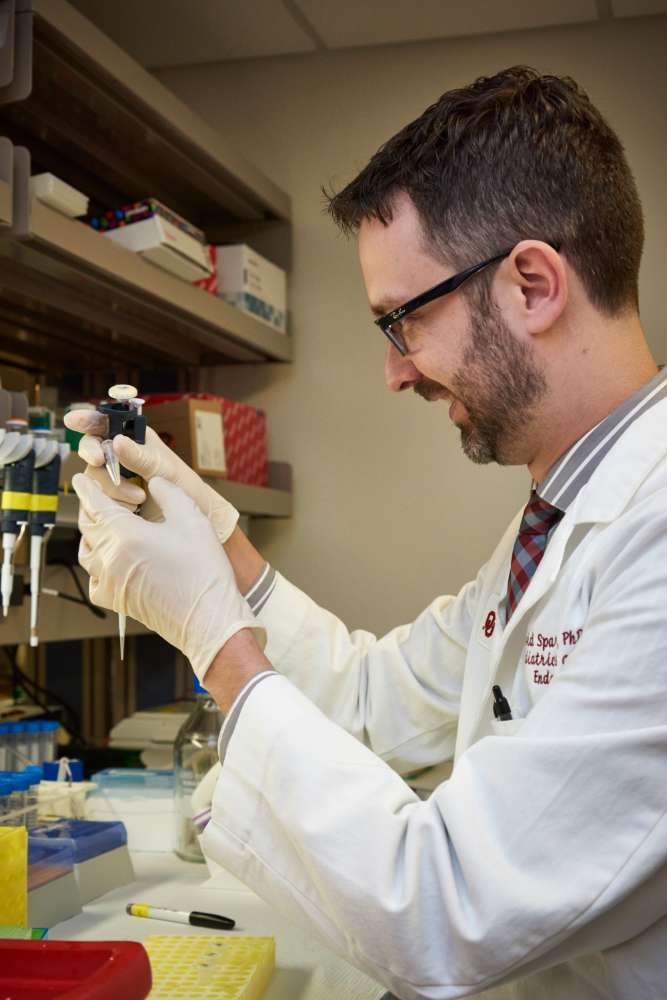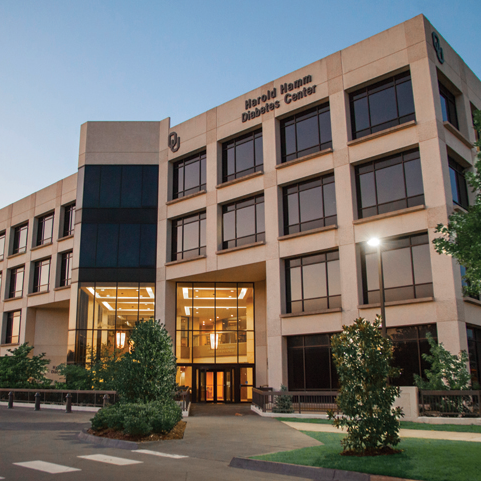Can you give us a basic overview of your pediatric diabetes research?
My research at OU goes in 2 separate directions; I'm primarily a basic scientist, looking at how adipocytes (fat cells) interact with the immune system. It's currently thought that inflammation may play a role in the development of Type 2 diabetes; not all people who are obese go on to develop Type 2 diabetes.
So I'm looking at a very basic level of how adipocytes might interact normally with the immune system, and hope to (in the future) figure out how this might go wrong.
It's important because we know from the TODAY study (that OU was and continues to be a major part of) that kids that develop Type 2 diabetes fail their initial treatment much more quickly than adults, and our treatment options in kids are pretty limited. Figuring out how and why the disease progresses so rapidly is vital.
My other research focus is for Type 1 diabetes (T1DM); I'm the site primary investigator for two nationwide studies: the Type 1 Diabetes Exchange and TrialNet. These studies look into the progression and early treatment of T1DM (that's T1DEx) as well as the possible prevention or cure of T1DM (that's TrialNet).
We are still recruiting patients into TrialNet, because, surprisingly to most people, we don't actually know what causes T1DM. We know that there's a baseline genetic risk, and that 1 in 300 average people will develop T1DM, but 1 in 20 first degree relatives of a T1DM patient will go on to develop disease.
So, we screen family members of newly diagnosed patients with T1DM to see if they have the antibodies suggesting they might be at increased risk for diabetes. If they have a certain antibody profile, we follow them closely with a variety of tests, and can even occasionally enroll them in T1DM prevention studies that are planned and coordinated through TrialNet.
It's exciting to be a part of cutting edge clinical research like this as well!

Explain the difference between Type 1 and Type 2 diabetes, and how they affect children differently than adults.
As to Type 1 vs. Type 2 diabetes, that's exactly what TrialNet is teaching us.
Type 1 diabetes is an autoimmune disease. At some point in the life of someone that has the genetic potential for T1DM, there's an "event" that causes their body to begin attacking their beta cells, the cells that produce insulin.
Over time, with enough damage, most of the beta cells are lost and your body stops producing enough insulin, leading to the high blood sugars and other problems associated with T1DM.
Type 2 diabetes on the other hand is due to something along the lines of beta cell burnout. Patients (frequently obese) have worsening insulin resistance, and so the beta cells have to make more and more insulin until they stop working, and the blood sugars start to rise and stay high.
In other words, if you imagine that insulin is the key that unlocks your fat and muscle cells to absorb sugar, in Type 1 you've lost the keys, but in Type 2 the lock and keys are stripped and the keys stop working.

What are the current treatments for children with diabetes?
So, then, current treatments for diabetes in kids. For T1DM, it's insulin, and the only way to get it is injections or infusions. Since you need insulin every time you eat carbs, that means kids take 4 or more shots a day, on top of regularly checking their blood sugars with finger sticks and a glucometer. We aim for at least 4-6 checks a day.
They take basal (long-acting background insulin) once a day, as well as short-acting bolus insulins for food or if their blood sugars are too high. Some kids/parents choose to use insulin pumps, which give tiny amounts of the short acting insulin all through the day, along with the larger mealtime boluses, through a small catheter that gets placed under their skin and is changed out every 2-3 days.
New technologies including continuous glucose monitors (CGMs) are really changing the treatment of T1DM rapidly; one of the newest insulin pumps can use a CGM follow your blood sugars and change your basal insulin rate throughout the day to help improve control. And the newest CGM may be the first step in decreasing the frequency of finger sticks as well.
For kids with T2DM, we've got metformin, a classic drug that's been used forever, and they can be on this till they "fail," i.e. their average blood sugars are consistently too high, and then we start insulin. It's tough, because there are so many more treatments available for adults with T2DM than kids, which is why research continues to be needed.
What challenges do children with diabetes face?
I'm sure by now you see the challenges. Kids with T1DM, which is more common that T2DM, have to constantly worry about what their blood sugars are, and how food might affect them, and how exercise, puberty, everything plays into this as well.
Kids with T1DM frequently have to grow up fast, and make big decisions about their day to day life several times a day. Their families worry about low blood sugars and seizures overnight when nobody is actively checking a blood sugar.
They're dealing with a chronic disease and we have a great treatment, like insulin, but no cure. And it makes them different, which you can imagine for kids and teens can be a big thing.
It's why we have great services at OU; a whole treatment team, including diabetes educators, a behavioral health specialist, child life specialists in the hospital that help when kids are newly diagnosed, nutritionists, everything. We have to teach families how to manage at home, and the families frequently have to go teach schools how to best help their kids.
It's a tough challenge, but our kids are amazing. My mantra is no one should ever be discriminated against because of their illness; they're kids with diabetes, not diabetics. They need to be kids, first.
That's also why we have things like Camp Blue Hawk through Harold Hamm Diabetes Center; it's a summer camp for kids with T1DM, where they can just be themselves. Sometimes it's the first time they've been away from home without their parents since their diagnosis, and sometimes it's the first time they've met and hung out with other kids with diabetes. It's really awesome.

As an M.D./Ph.D. graduate, you see patients and conduct basic science research – describe why you chose this path
I joke that I chose to be an MD/PhD because I didn't know what I wanted to do with my life, so I decided to stay in school forever. Really, it's that I grew to love basic science research through high school and college, and when OU restarted their MD/PhD program, my brother, who was in med school at the time, mentioned it to me. It sounded perfect, and I've loved every minute of it. The chance to help patients and discover new things no one else has ever seen at the same time is an amazing life. It just takes a while.
Does taking care of patients spark questions for you to ask in the research lab?
I definitely see new things in patients that change how I think about my lab work; that's the joy of the work. There are always more questions to ask, and the hope that the answers we find may help another patient some day.



